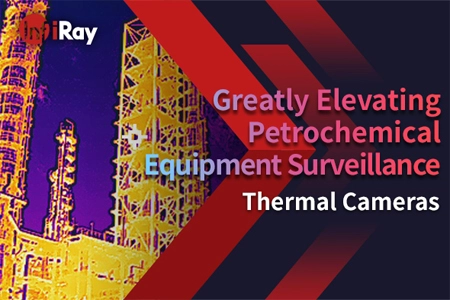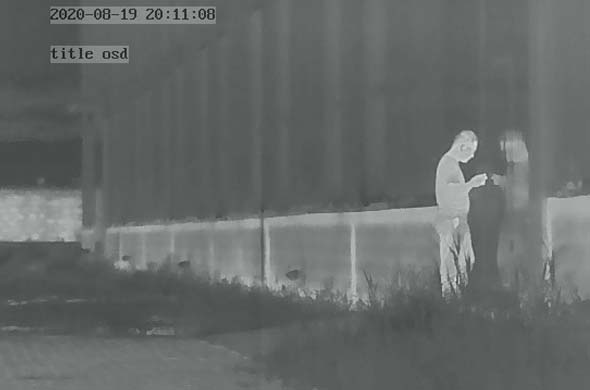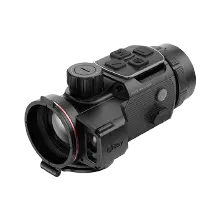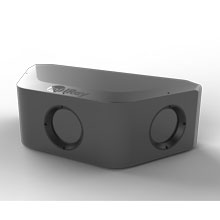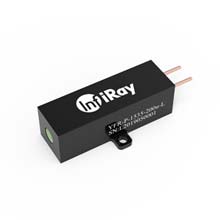Completely Change the Way of Building Diagnostics with Thermal camera
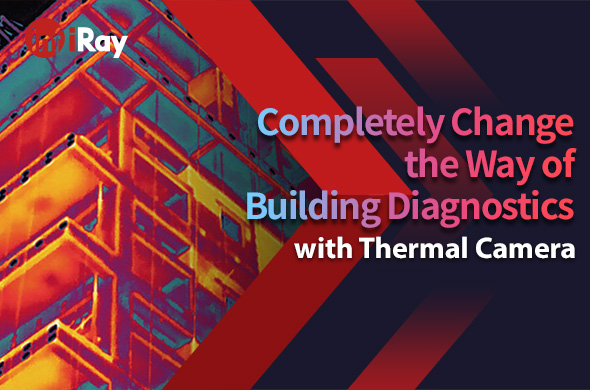
Thermal cameras have been used for a long time in a variety of industries, but their benefits have only recently become more widely known. They are now being used in the construction and building industry for diagnostics and inspections, revolutionizing the way that building inspections are performed.
Typically, building diagnostics involve a combination of visual inspections, data collection, and laboratory analysis. This process can be time-consuming and expensive, especially when trying to identify hidden issues that are not visible to the naked eye. The limitations of traditional building diagnostics are particularly evident when it comes to detecting issues with insulation, moisture, and air leaks. These problems can often go unnoticed for years, resulting in higher energy bills, poor indoor air quality, and even structural damage. Additionally, the traditional way of building diagnostics often involves destructive methods that require tearing down walls or floors to identify potential issues.
Thermal Cameras to the Rescue
This is where thermal cameras come in. The use of thermal cameras in building diagnostics has proven to be a game-changer, as it allows for more accurate and efficient inspections. These cameras use thermal imaging technology to capture the temperature distribution of a building's surface, allowing inspectors to detect issues that may not be visible to the naked eye.
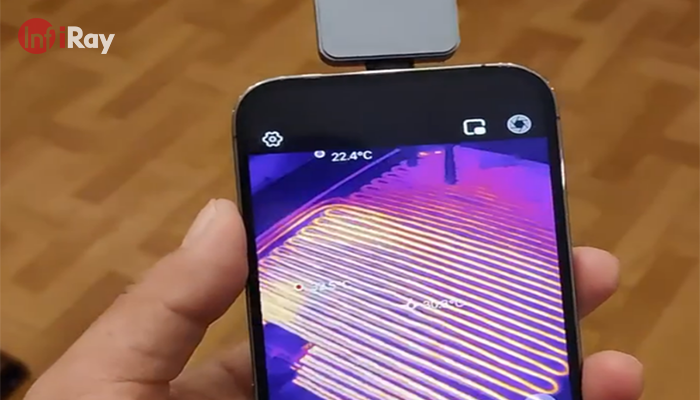
By using thermal cameras, you can diagnose what's wrong with the heating system without prizing the floor.
One of the major benefits of using a thermal camera for building diagnostics is that it is non-invasive. Unlike traditional methods, such as tearing down walls or floors, a thermal camera can identify issues without causing any damage to the building. This not only saves time and money but also reduces the risk of further damage to the building.
In addition to being non-invasive, thermal cameras are also much faster than traditional methods. They can quickly scan large areas of a building and identify potential issues in real time. This allows building inspectors and contractors to quickly identify and address any problems before they become more serious.
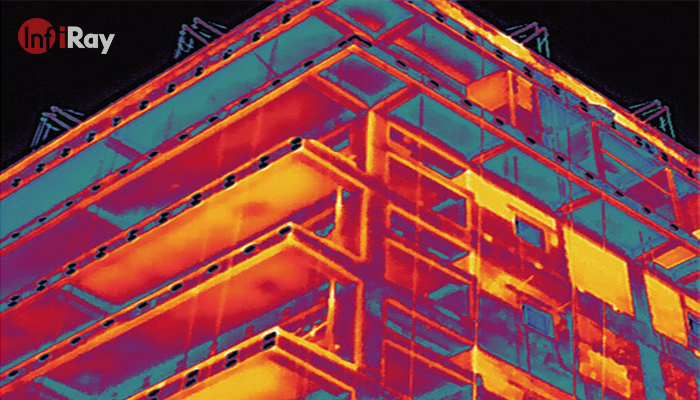
The thermal camera can be used to observe large areas of the exterior of the house.
Another benefit of using thermal cameras for building diagnostics is that thermal cameras are extremely accurate. For example, the InfiRay Handheld Thermal camera can detect temperature differences as small as 0.05°C, which makes it extremely accurate in identifying potential issues in buildings. It can quickly identify areas that are warmer or cooler than their surroundings, which can indicate leaks, insulation issues, or other problems. By pinpointing these issues, building inspectors and contractors can quickly identify the root cause and develop a plan to fix it.
In addition to handheld thermal cameras, there are also options for smartphone-based thermal cameras, such as Infiray Xinfrared P2 Pro. This camera attaches directly to a smartphone, allowing building inspectors to take thermal images quickly and easily using a device that they likely already have with them. Such a small and convenient device is more suitable for home inspection.
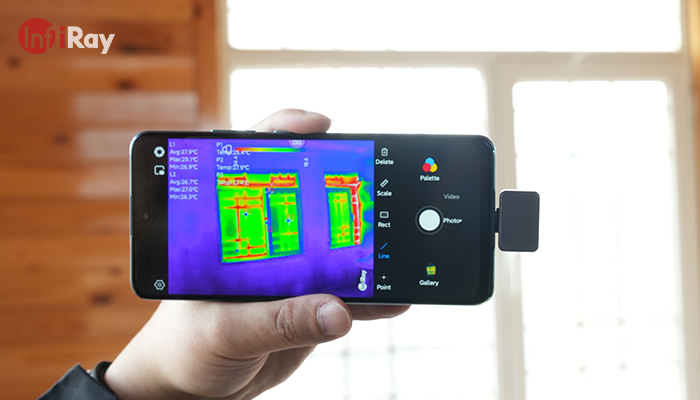
Using InfiRay Xinfrared P2 Pro thermal camera for smartphones to detect energy loss in home inspection
Finally, they can be used in a wide range of settings. They are ideal for both residential and commercial buildings and can be used to diagnose issues with everything from insulation to electrical systems. This versatility makes them an essential tool for anyone involved in building inspections or construction.
Overall, the use of thermal cameras has completely changed the way building diagnostics are conducted. By providing a non-invasive and highly accurate method of identifying building-related problems, thermal cameras have become an essential tool for building owners and managers. Whether used for energy audits, moisture detection, or electrical inspections, thermal cameras are a valuable investment for any building owner looking to improve efficiency and reduce costs.
The benefits of using thermal cameras for building diagnostics cannot be overstated. These cameras have completely changed the way building-related problems are identified and addressed, and have become an essential tool for building owners and managers. By detecting issues early and providing accurate data, thermal cameras can improve the overall efficiency of building maintenance and result in significant cost savings. If you own or manage a building, consider investing in thermal imaging technology to improve energy efficiency, reduce costs, and protect your investment.








